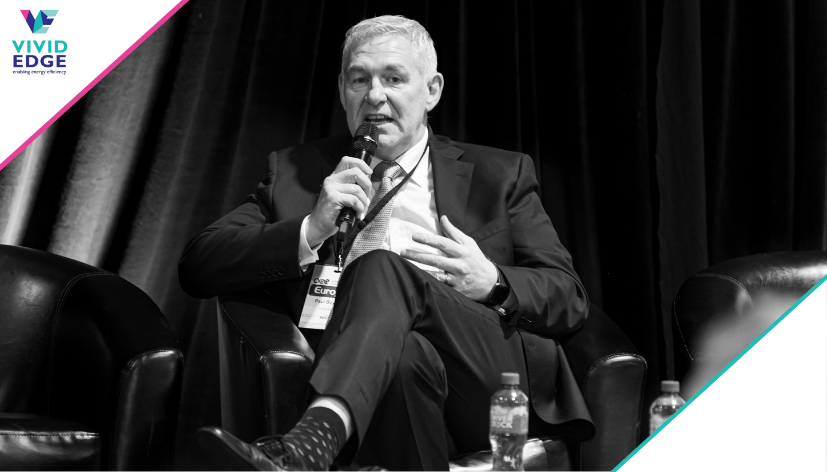In our experience, there is substantial energy waste across businesses due to old assets that no longer deliver optimum output. As companies sweat their assets, equipment efficiency and resilience slips causing maintenance and energy consumption costs to rise.
An upgrade to newer generation efficient alternatives can deliver energy savings of over 30% while improving carbon footprint. Cutting energy consumption and considering energy efficiency first is one of the smartest and quickest ways to reduce costs without impacting customers or sales.
Energy consumption is such an overlooked opportunity.
A core reason for this is the desire to preserve capital. The Vivid Edge service model is a smart way to upgrade to superior technologies, reducing energy consumption and carbon footprint without requiring any capital, and the energy savings can cover the cost of the service fee. In this approach, Vivid Edge pays the capital cost and charges a monthly service fee for an agreed term. While this case study is based on a service model approach, the study is also relevant to those considering a traditional capital expenditure approach.
CASE STUDY – 20GW Data Centre, Northern Europe
We profile below the business case for a data centre, space cooling retrofit, replacing existing ten-year old assets, in a facility that consumes 20GWh on average per annum.
ENERGY PROFILE
The data centre energy information before the upgrade is set out below. Cooling equipment represents c39% of the total energy bill for the data centre.
Table 1: Data centre energy overview – pre-upgrade

The business is seeking to improve their PUE (power usage effectiveness) but prefer to preserve capital for core business activity.
EQUIPMENT
The project involves the replacement of the existing cooling with modern indirect free cooling inverter compressor DX systems, with a total capital cost in the region of €940k. Installation is relatively straight forward and can be programmed in on a phased basis with minimum disruption to the datacentre operations. The equipment has a useful life of at least fifteen years when operated correctly and cared for and the service contract is delivered over an eight-year term.
FINANCIAL BUSINESS CASE
The chart and table below show the energy cost baseline before the upgrade, the Vivid Edge service charge and the energy cost saving over the life of the equipment.
Chart 1 – Energy cost saving

Table 2 – Operating cost savings

IMPACT
Chart 2 Impact

BUSINESS BENEFITS

- Immediate Payback
- No capital outlay to obtain latest technology.
- Parts, labour and maintenance included.
- Increased business and operational resilience
- Fully funded by wasted energy
- Net savings for asset useful life €4.6 million.
PUE
The Power usage efficiency of the data centre measures the ratio between the ICT load (telecoms equipment) and the non-ICT load (support infrastructure). The lower the better. In this case study the PUE post upgrade is significantly improved.
Table 3: PUE pre and post upgrade

ENERGY LOAD
The chart below shows the load profile pre and post measures:
Chart 3: Significant Energy Users (Pre-Upgrade)

Chart 4: Significant Energy Users (Post-Upgrade)

Table 4 Energy load post-upgrade

ACCOUNTING TREATMENT
The service model approach is a smart alternative to funding projects using the energy savings as a source of finance, with a positive impact on operating expenses and no capital impact. Not all projects will qualify for operating expense treatment, Vivid Edge has developed an approach that can allow this treatment.
CONCLUSION
The ICT sector is quite energy intensive and according to the EU JCR Reports, generates up to 2% of the global CO2 emissions. Data Centres are estimated to have the fastest growing carbon footprint across the entire ICT sector, mainly due to technological advances such as cloud computing and the rapid growth of the use of Internet services. Typically, up to 40% of a data centre’s power consumption goes toward cooling the servers.
As data centres move towards “greener” more sustainable operations, improving the energy efficiency of cooling operations is now critical.
The Case Study shows that a project that was not classified as essential spending, can be fully self-funding and require no capital under a service model approach. The project substantially improves PUE while offering superior resilience, better controls, optimum efficiency and reduced emissions. It further results in data servers, exchanges and switches being more protected before, improving internal operations and service to its customers.
The Case Study makes operational, economic and climate action sense, whether funded through cash or a service model.
Authors:
Tracy O’Rourke & Paul Boylan, Vivid Edge
Vivid Edge helps large energy users reduce energy consumption without requiring capital. A broad scope of energy saving measures can be included and customers are offered choice of supplier and installer, subject to quality standards.
Vivid Edge is backed by a large European energy efficiency fund and can support projects in EUR and USD in most OECD countries.



